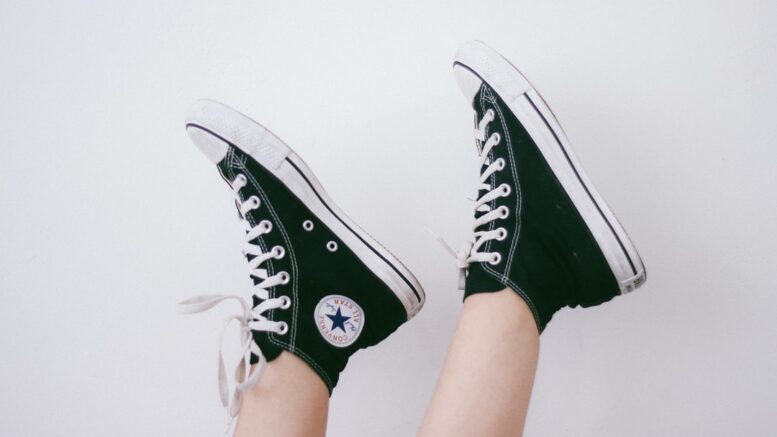In many countries, kids regularly have their legs, feet, and hips diagnosed by their physicians in a hospital or by maternal nurse visits.
When kids grow, concerned parents are often worried about their feet not looking normal when they walk. Some of the parents even find their child’s feet pointing inwards as they walk (also known as Metatarsus Adductus (MTA) or pigeon-toed walking) or outwards (also called duck-footed).
These walking positions are commonly known as “rotational deformities,” which causes parents to seek a professional opinion of an orthopedic surgeon, podiatrist, or even a physiotherapist for a deeper understanding of this problem.
Moreover, several concerned citizens in the United Kingdom run a charity to help kids facing rotational deformities. With the assistance of such organizations, parents worldwide find helpful and valuable information about this lesser-known health issue that may negatively affect their child’s growth.
So to give your child the attention and care they deserve, keep reading and find all the information that may affect your child’s growth and development in the upcoming year. Let’s begin:
Rotational Deformities
When a child’s leg faces inward or outward position while walking, you don’t always need to be concerned. It may be due to many factors and changes in the foot or leg of your kid. More often than, when a child is born, they have curved or bowed legs. This could be expected due to the baby’s position in the womb.
However, if you see your child’s feet are growing abnormally. The effect becomes more pronounced when the child begins to walk. It might appear that the child’s feet are facing inwards. And often, you will see children tripping or falling over their own feet when they try to talk at a faster pace. This could result from in-toe walking coming from a curved foot (Metatarsus Adductus) or an inward twist in the leg bones. Consequently, it can affect one or both feet.
In many cases, there is no particular reason or evidence that shows the cause of this problem. But the most common cause is known to be the child being squashed in the womb. And often, Metatarsus Adductus causes no pain to the child and might even get better without any treatment as the child grows. On the contrary, it is also possible that it doesn’t get better. In that case, seeking professional assistance is recommended. Make sure you provide your child with all the necessary care as soon as possible.
Arched Feet
MTA is considered one of the most common foot deformities in newborns. A child’s feet suffering from MTA would appear banana-shaped or arched in appearance. However, in 95 percent of cases, the foot reshapes itself without any treatment.
In the olden days, it was advised to wear shoes on arched-shaped feet. However, this could do more harm than good, and it may cause incurable foot deformities. On the other hand, it is also possible that treatment is needed to wrong this right. So, if it doesn’t correct itself on its own, splinting or plaster casting may help the foot straighten and bring it back to normal conditions.
Additionally, parents should not hesitate to see a health professional if their child’s feet are arched, unable to straighten up, or stiff and do not straighten out as their child begins to age.

Turning Outward or Inward at the Hip
Femoral torsion is where the femur (upper leg bone) or hip is turned outward or inward. And when a child begins to walk, their feet might be inward or outward. Also, their knees might look pointing inward or outward.
If you don’t already know, the femur goes through several changes up to the age of 12 years, and often an inward curve at the hip is commonly seen in girls. Also, at the top of the legs, rotational changes are a ubiquitous part of growing up.
If a child is frequently sitting in the ‘W’ position, walking changes from the top of the leg and hip will become more common. It’s a sitting position where a child’s bottom is on the ground, and their legs are folded outside.
However, no such research provides the fact that sitting in this position is harmful to a child. Still, therapists often find hip muscle tension in children who practice seated in this way, and it may even negatively affect the child’s walking. Even when the harm is unknown, making your child sit or play in another position is advised.
Additionally, no special shoes, garments, orthotics, stretches, or tapes are helping change the walking patterns associated with the above-mentioned rotational changes. Parents should not delay and seek medical attention at the first sign of trouble. A clear signal for seeking medical help would be if the child is dealing with the pain at the hip and it extends into the groin as they walk, regardless of their age.
However, it has been seen that children walk in tow and out-toe for several reasons. Parents must see a health professional if they find their child tripping from their leg position when going to school. If you find one leg turning inwards or outwards as compared to the other, seems longer or different in any other way, medical aids becomes necessary. But for a majority of kids, in-toe or out-toe walking is only a part of their growth.
To Sum it Up
The growth of your child is proportional to the care you give them. If you provide them with the care and attention they deserve, chances are they will grow into healthier and more successful individuals in life. On the other hand, if you are not giving them the care they deserve, a common issue of your sitting in the wrong posture can become a problematic one in the future.
For this reason, common posture issues caused due to MTA should not be taken lightly and should be dealt with at the first sign of trouble. However, most of the time, these issues do not require medical attention, but when you are a concerned parent, your job is to make sure that your child is growing into a healthy body. And you could only accomplish this by giving them the love and care they deserve.
